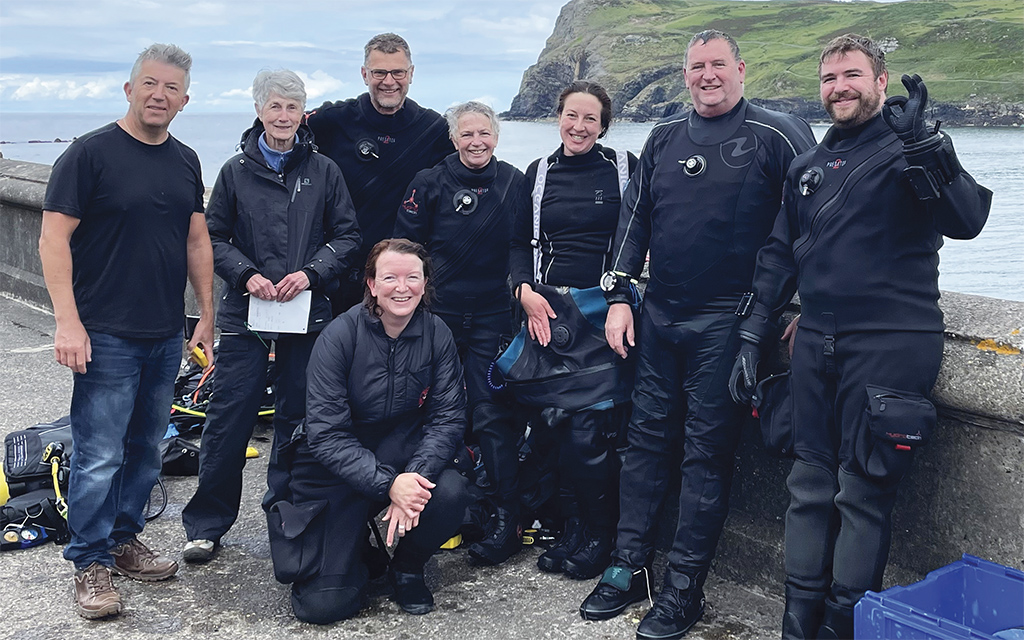
Imagine, a club based on an island, with two boats, plenty of dive managers and magnificent dive sites. Kristina Pedder meets the Isle of Man Sub Aqua Club.
When was the club formed?
We are proud to be among the oldest BSAC clubs; branch number 76. Formed in 1959, our origins are in the Port Erin Marine Field Research Station (now closed), where the original club committee members were based.
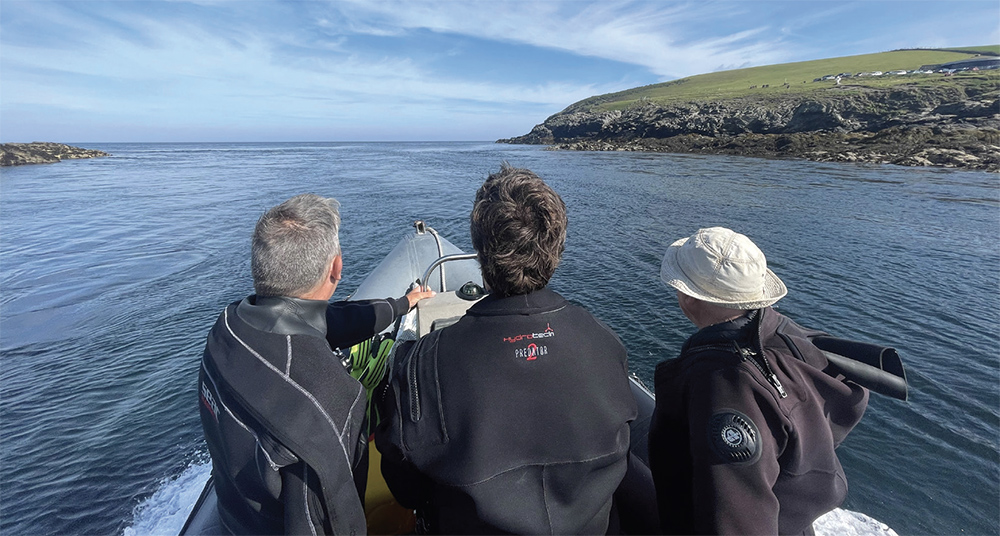
Steering a RIB through the Calf Sound
Tell us about the Isle of Man
The Isle of Man is at the centre of the Irish Sea. It’s not part of the UK you know, so if you came to dive here you could tick off another country. We are a UK Crown Dependency and, delightfully, the only whole nation in the world that is a UNESCO Biosphere.
Who are your members?
Our 50 or so members are a mix of genders and ages: some born on the Isle of Man; others who have moved here. Most are scuba diving members, but some snorkel as well. We have a spread of experience including two First class Divers, six Advanced Divers, nine Dive Leaders, five Sports Divers, 13 Ocean Divers and some 10 trainees, including those with other agency qualifications who may need drysuit training.
In the past year, we have had some notable people come diving with the club.
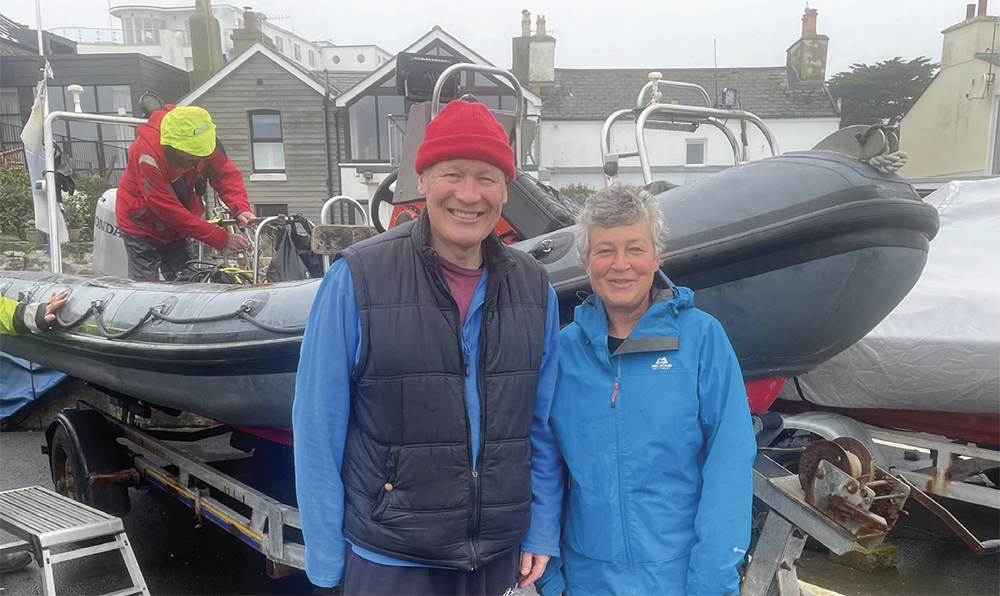
Sir John and Lady Lorimer on their first boat dive
Tell us more…
The King’s representative on the Island, the Lieutenant Governor, Sir John Lorimer and Lady Lorimer are both enthusiastic participants and supporters of many aspects of our island community. They learned to dive with us in 2024, and we are delighted that they are now both members and qualified BSAC Ocean Divers. Sir John is an ex-commanding officer of the Parachute Regiment and he was particularly keen to dive the wreck of the Racehorse (of which more later), which they did with the club on 4 May this year.
Ex-Royal Marine and TV scuba diving celebrity Monty Halls visited the IOM in November 2023 and joined club members for a shore dive in the seagrass meadow in Fort Island Gully at Langness Point.
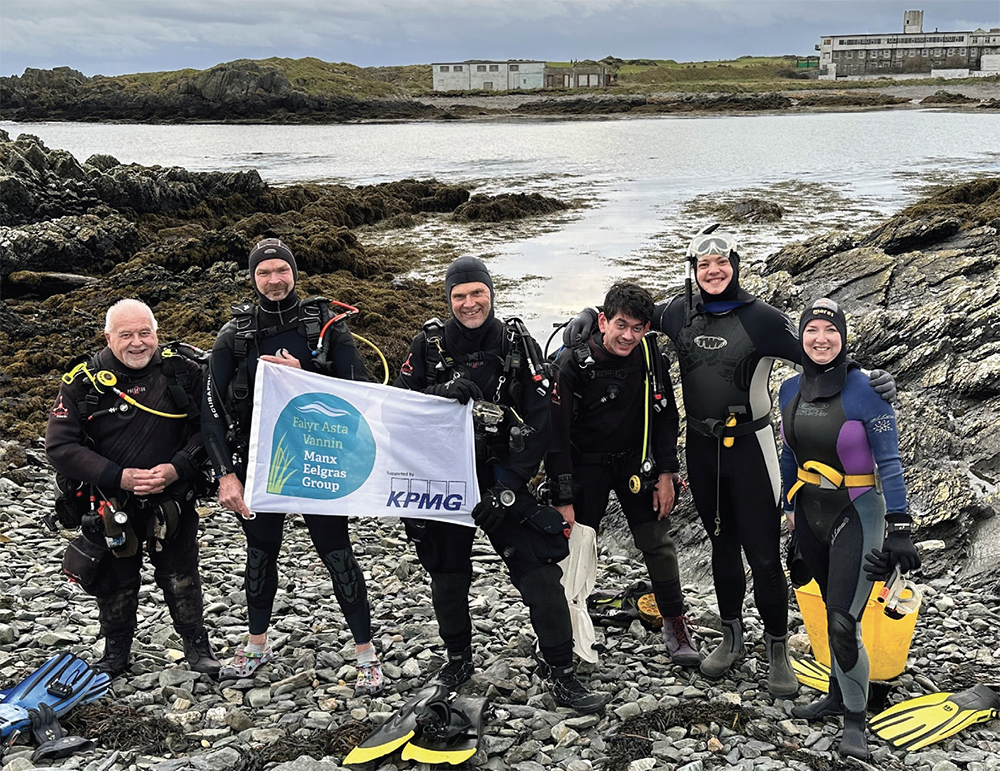
A seagrass dive with Monty Halls
What is normal club life like, you live on an island so you must have a boat?
The club has two RIBs, one based in Port St Mary in the south of the island, and the other in Douglas, our capital city, on the east side. This gives us two excellent bases to dive from and we also occasionally take the Douglas boat to Peel to carry out dives on the west coast. Our Equipment Officer Matt Corlett is part of the local RNLI crew and can fix anything. Several members are able to drive the RIBs, and we now have four members who can tow and launch them, so we share out the jobs.
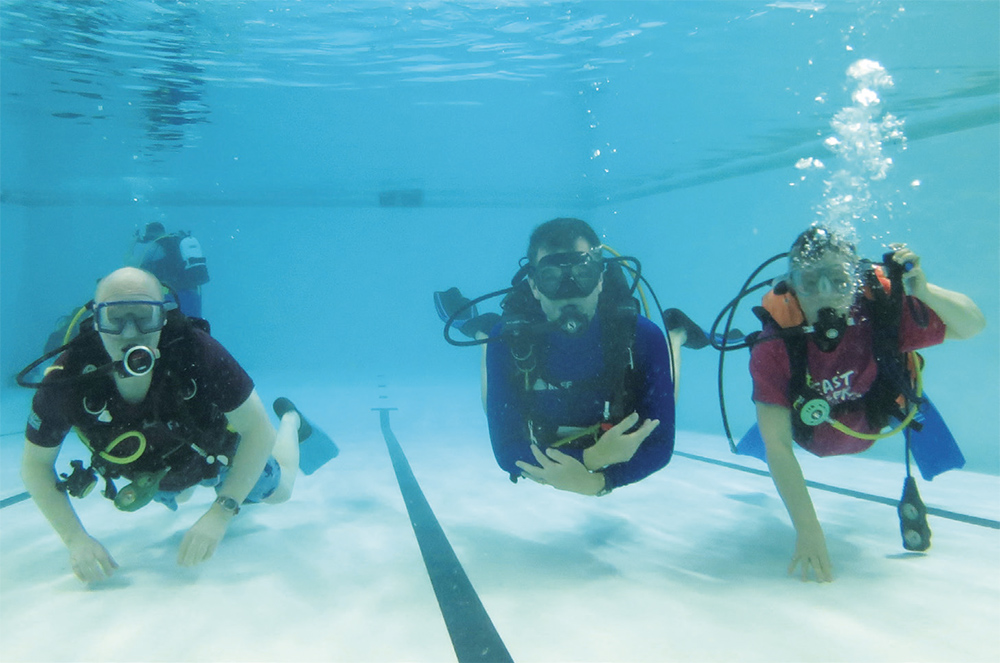
Sir John and Lady Lorimer in the pool
Where is your land base?
Our Diving Officer, BSAC National Instructor John Kermode, has a large shed that doubles up as our kit store and our Training Officer, Richard Wild, stores much of the kit for training. We also have a good relationship with the IOM’s only dive shop, and the other active dive club on the island, Discover Diving, in Port St Mary. As well as paying for use of their compressor and hiring some training kit from them, some members join them for dives every year on their hard boat, Endeavour. It is lovely to occasionally have a seat, head, kettle and a dive lift on the boat. Two of our members have compressors if we need them and we put in a successful funding bid to the Manx Lottery Trust in 2024, which secured £2,500 to buy new training equipment. The majority was used to purchase three new BCDs and sets of regulators from our local dive store, Discover Diving.
What is your training set up?
The pool at King William’s College in Castletown is a great pool and the deepest (and warmest) on the island. We have recently started to use the shallow water off Douglas beach as an alternative to the pool, which is working well. Then open-water training is carried out mainly from Port Erin jetty, which is a brilliant training site. It is a sheltered bay, excellent rocky reef and sand bottom with lots of marine life, with a multi-level concrete pier, with good steps for egress, and has excellent parking and proximity to toilets, pubs and coffee shops.
Diving Officer John is regularly in the UK running training weekends for BSAC. Our club Training Officer, Richard Wild, and club members Pauline Berrie, Lara Howe and Leigh Morris are the other active BSAC Open Water Instructors in the training team. So, we are all set and would just like to see more young people wanting to learn to dive.
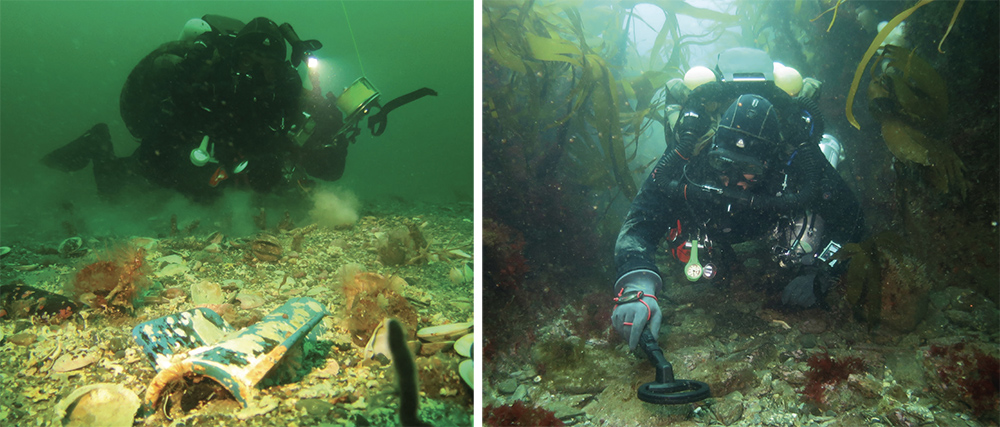
L: a dummy bomb; R: Lee Dixon on the Racehorse
How do you organise your diving?
We dive every weekend (weather permitting) typically on Sunday mornings. We have a team of experienced dive managers with different interests. The dive manager of the week will usually put out a WhatsApp to all members on Wednesday after looking at the forecast for the weekend and will plan a boat dive around the conditions and interest of those who are free to dive. In addition to the weekend boat dives, we do occasional shore dives in the summer all around the island.
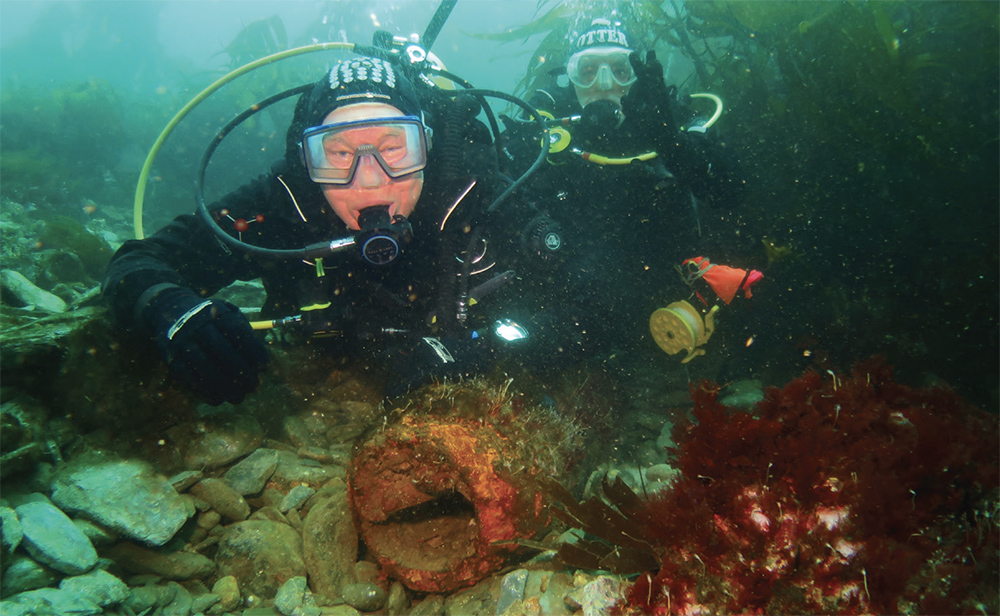
Sir John dives the Racehorse
What is your local diving like?
We have wonderful diving. Typically, we get excellent visibility due to the lack of any large silty rivers and because the coarse sands around the island settle out quickly after rough weather. There is fantastic scenery above and below the water. There are rocky reefs, caves, swim-throughs, brittle star, feather star and horse mussel beds, reefs covered in anemones, and a huge variety of wonderful marine life including sea birds, cetaceans and seals (who often say hello under water too).
There are big tides and strong tidal flows round here, which means we have to plan dives carefully, but it also means we have some spectacular high-energy sites where the rocky reefs are completely covered in animal turf, including multiple colours of jewel anemones.
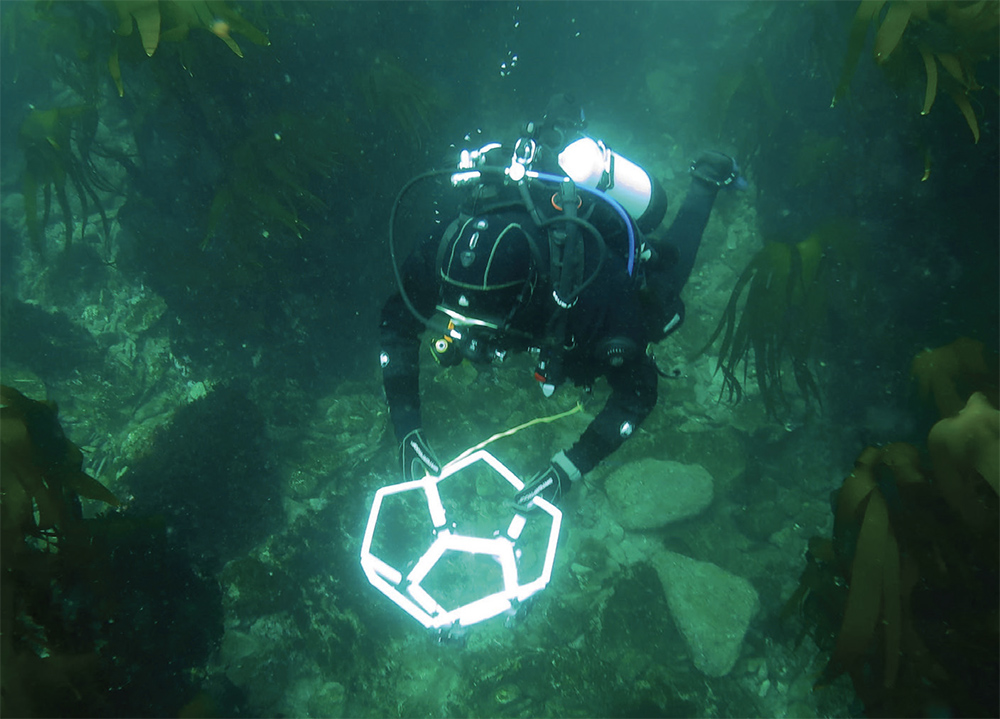
Photogrammetry with Jon Chamberlain
I imagine there’s plenty of history about too?
Lots of ships have bumped into the island over the years, including some very historic ones. The club owns one of the most historic wrecks in the British Isles HM Sloop Racehorse (see below), and we have many other wrecks at a range of depths we can dive on. The Bottle Run is a dive we carry out a few times each year in search of ‘treasure’. In fact, the treasure is the bottles, jars, cups, plates, ashtrays that have been thrown off the ferries coming in and out of Douglas harbour for hundreds of years. There are always things to find.
Another historic site off the north-west coast is the old RAF bombing site we call Jurby Targets. Two anchored targets were used for many years by the RAF for bombing practice and the club dives there two to three times a year in search of the range of dummy bombs on the seabed, which we leave in place: look and don’t touch.
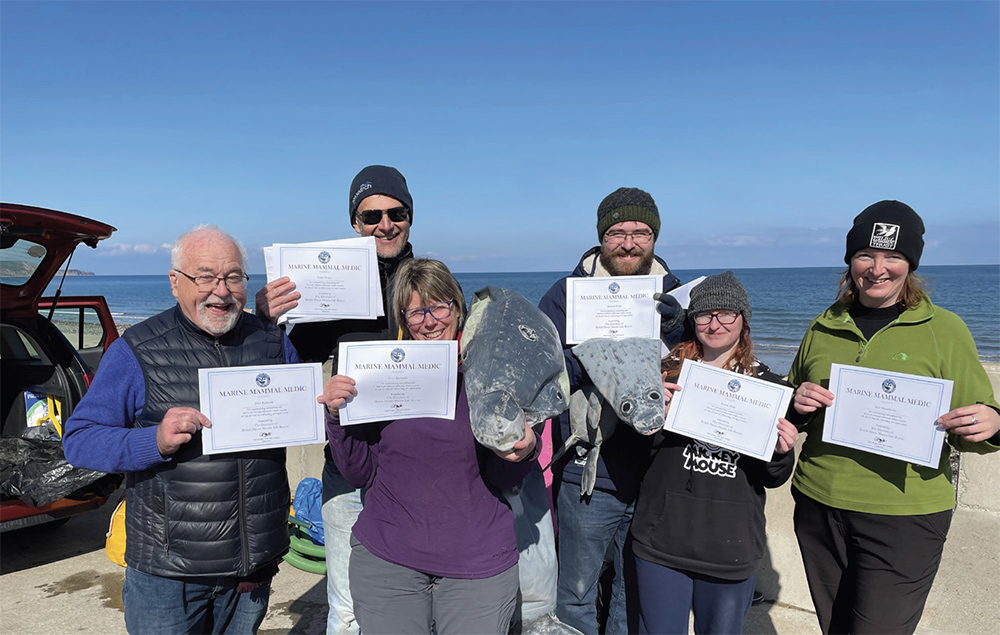
Members at a BDMLR course
There must be the opportunity to get involved in some special projects?
Members try to dive with a purpose whenever they can. As we have mentioned a few times already, we are proud to own an important historic wreck, HM Sloop Racehorse. This Royal Navy ship was wrecked on Langness Point in December 1822 and is regarded as a significant moment in the foundation of the RNLI by William Hillary. The full story of the Racehorse is covered in a blog called HM Sloop Racehorse, written by our Chair, Leigh Morris.
We rediscovered the wreck site in April 2022 when Jon Chamberlain from Essex University carried out photogrammetry of the main wreck site and created a 3-D model. Jon and his team returned to the IOM in 2023 and carried out wider mapping of the wreck site with UWIS tracking equipment, and on this visit we were delighted to find three of the cannons, carronades actually (short, light cannon with a large bore, used at close range) from the ship. Jon and team, now members, returned again in May 2024 to do further mapping. As a club we dive the site regularly and are finding new artifacts on every dive.
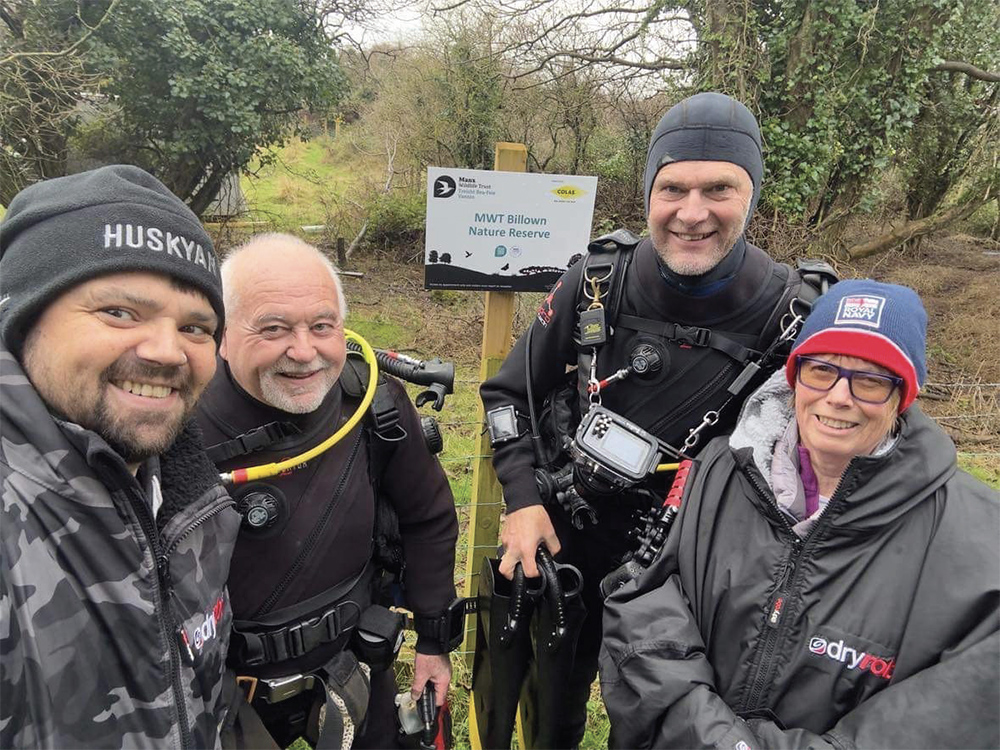
Quarry dive at the nature reserve
But it’s not all about wreckage?
No, our Club Secretary Lara Howe is the IOM coordinator for the citizen science marine life recording project Seasearch. Lara is also the Marine Officer for Manx Wildlife Trust, and, assisted by our Club Chair Leigh (who also works for Manx Wildlife Trust), she coordinates the Manx Eelgrass Project. This provides opportunities for our club members to engage with underwater surveys and we also carried out seagrass translocation. Oh, and we aim to do a dive-litter pick once a year, typically to coincide with the global marine litter clean-up day in September.
The club was recently contacted by Merv Williams, an amateur lighthouse enthusiast with links to heritage organisations, who asked if we could do a search dive around the base of Douglas Lighthouse to look for the metal frame of the old light lens that is believed to have been thrown in the sea during an upgrade in 1986. It will be our next mission.
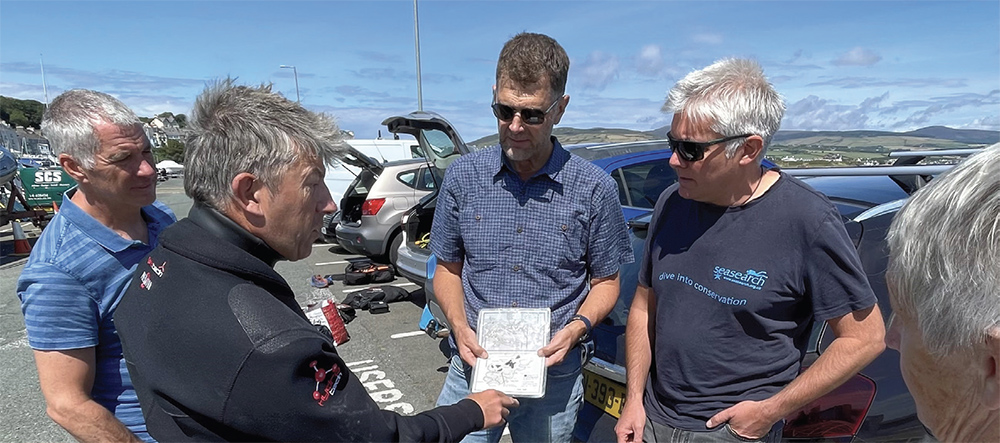
Dive briefing in process
What else is the club planning for the next few years?
We will be developing our membership, particularly in the island’s capital city of Douglas. We know there are scores – maybe hundreds – of qualified divers in the Isle of Man who probably never dive in British waters. We are keen to launch club pool/social nights in Douglas, hopefully encouraging more to join the club, try IOM diving and maybe go on foreign diving holidays together.
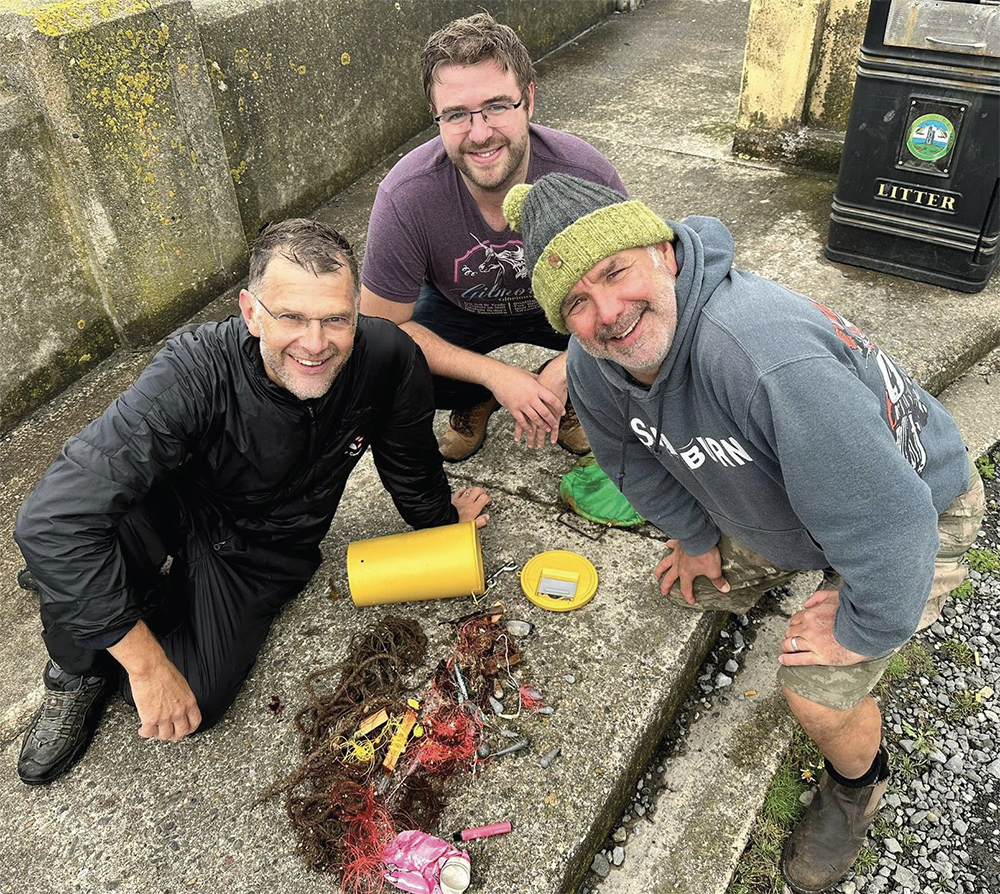
At the litterpick
The Isle of Man is a well-kept diving secret. We are only a two-and-a-half-hour ferry crossing away from Liverpool, so we are always amazed that more UK-based divers don’t come here to dive. We’d love to welcome you to come and dive with us around our island.
Article ‘Club Focus – Isle of Man Sub Aqua Club’ by Kristina Pedder first published in SCUBA magazine, Issue 150 November 2024.
How do I find scuba diving near me?
If you want to learn to dive in the Isle of Man with the Isle of Man Sub Aqua Club, please contact Leigh Morris.



